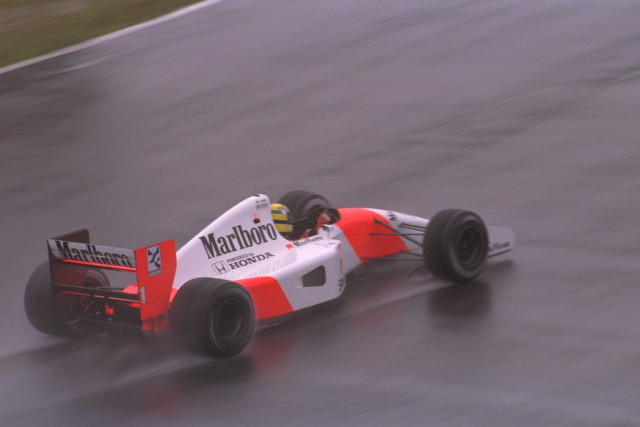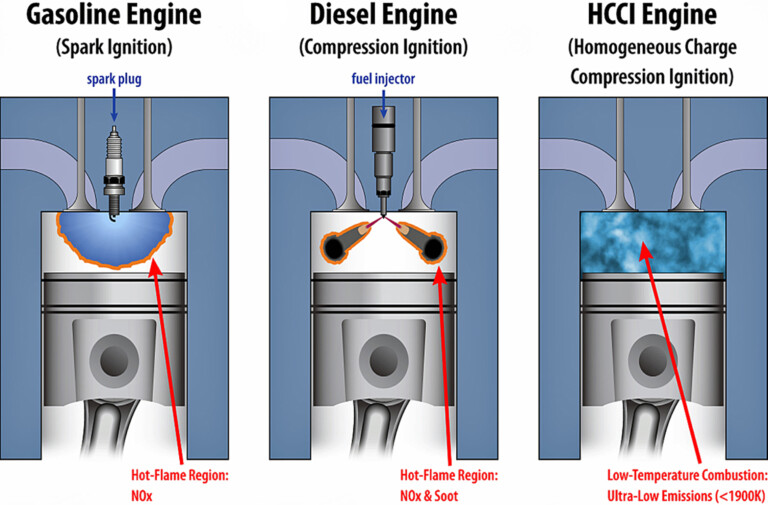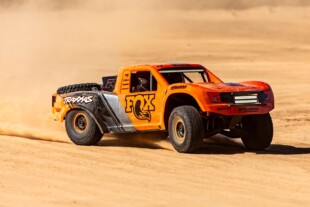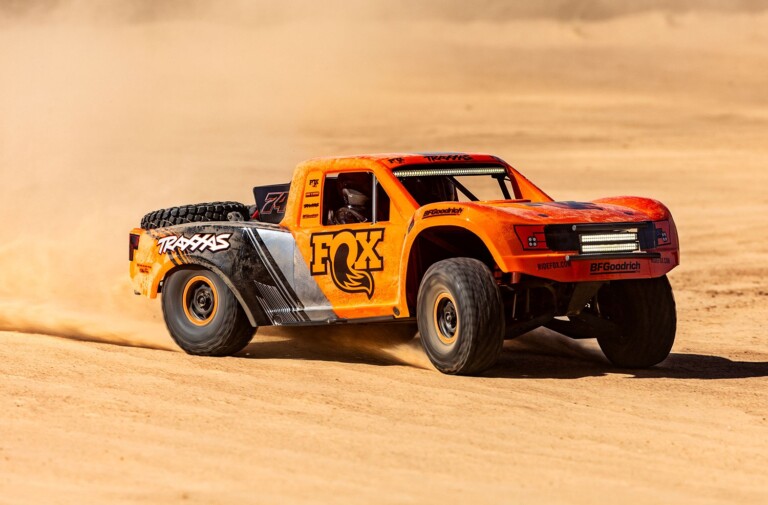Formula One was quite a different spectacle in the early 1990s. After moving away from the troublesome, cost-prohibitive turbo engines of the 1980s, F1 regained a little more glitz and panache with the then-newest breed of V8s, V10s and V12s which populated the ranks. The open rules meant teams could try out newer forms of technology, and with a race towards more sophisticated platforms, the creations some of the major teams concocted were both technically stunning and spectacular.
What helped make the spectacle even more alluring was the ratio of aerodynamic grip to mechanic grip. The tires on these cars were noticeably massive, and with aerodynamics an important part of racing — though not as influential as they are today — the cars were nervous, highly-strung monsters that required equal parts skill and bravery. With torquey, 3.5-liter engines making upwards of 750 horsepower, no drive-by-wire, and wide slicks with a quick traction dropoff, the Formula One machines of the early nineties were edgy, hyper-responsive and unforgiving at the limit. Plus, they were gorgeous. Those simple lines, understated aerodynamic elements and wide tires gave these monsters a presence that’s sorely missing with today’s elongated, fussy-looking models.
What ended up deciding the championship that year were the electronics the Williams team had finally perfected. While problematic during their onset in the eighties, developed electronic systems like active suspension gave the team an immense advantage. Even Ayrton Senna in a McLaren powered by one of the most powerful engines around couldn’t come close to the Williams’ performance. Note how smoothly the FW14B covers the imperfections in the road, beginning at 2:42.
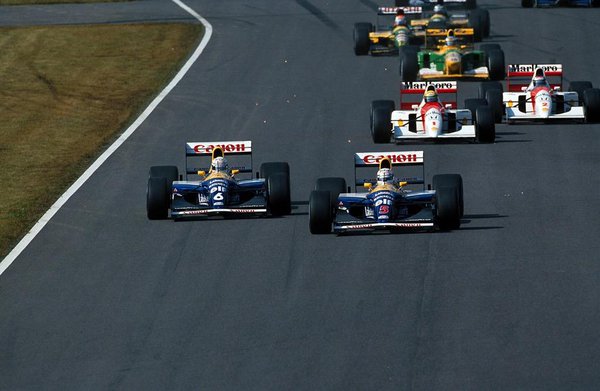
Active suspension allowed the Williams to consistently carve out a commanding lead at the start and on cold tires.
Compared to the others, it appears to have a luxury car’s ride. While problematic, the actively-suspended FW14B worked wonders when it functioned properly. By learning the subtleties and contours of the track, the active suspension could preempt each corner, and set the car up to handle that particular curve as well as mathematically possible. From the outside, it appeared to ride like a Cadillac, and this supple ride gave it immense traction.
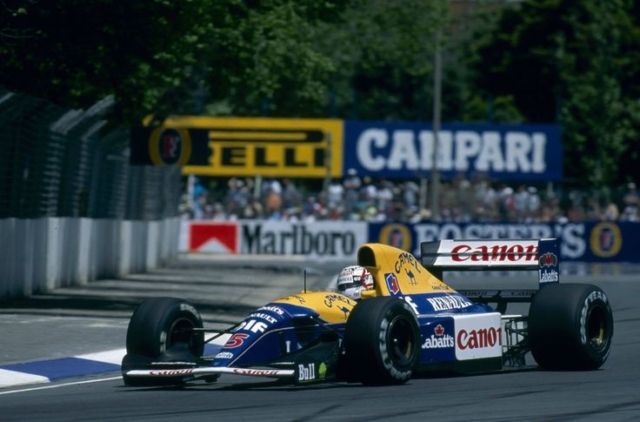
The actively-suspended FW14B could be distinguished by the bulbous pods on the nosecone. These held some of the active equipment.
While it managed to squirt effortlessly out of slow corners thanks to traction control, the active suspension didn’t offer much feel, which made the FW14B a tricky car to drive. It also developed an incredible amount of downforce, and therefore exerted huge physical demands on the drivers that could manage them. For this reason, Nigel Mansell’s aggressive, gutsy style and linebacker’s shoulders aided him in wrestling the techno-titan to the world title that year. Irritatingly, his many critics assumed his success was due to the amazing machine — but often neglected to note how convincingly he defeated his teammate.
This period in time was known for one-team dominance much like today’s Formula One, and it justifiable had its fair share of detractors. No period of racing is ever perfect, but if F1 did one thing well in the early nineties, they made the cars varied, attractive and awe-inspiring. Truly, the men who wrangled these monsters were brave, and few people would dispute that.



